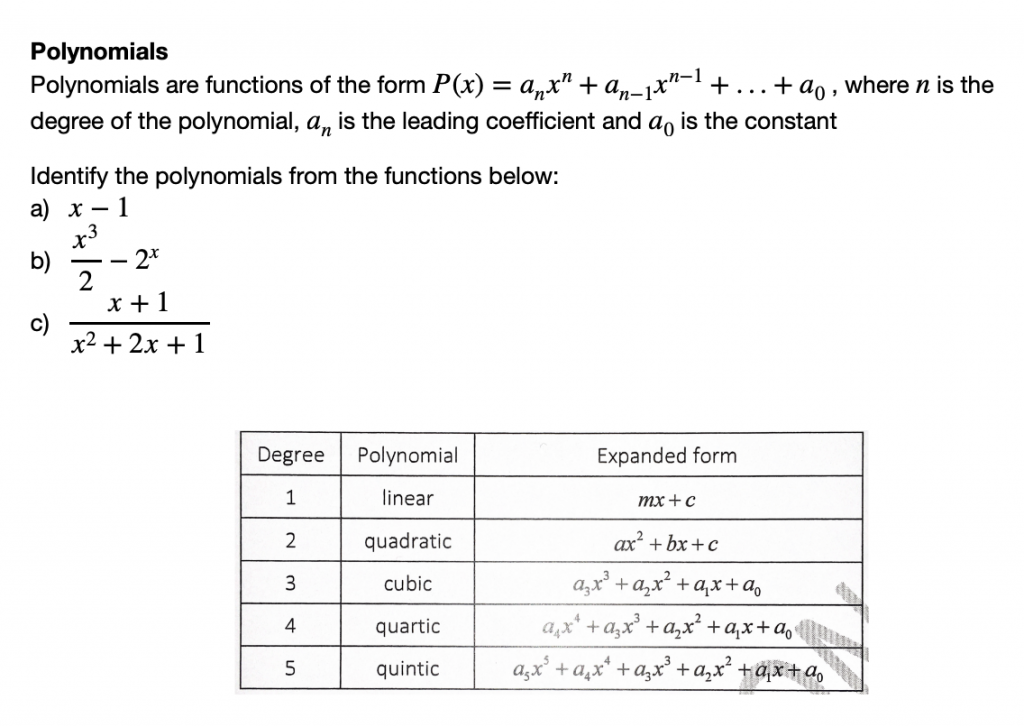Maths Methods 3/4 Polynomials Notes
Summary:
Polynomials are mathematical expressions of terms with variables raised to a whole number exponent and coefficients. These expressions come in various degrees, where the degree determines the highest power of the variable in the polynomial. Quadratic functions are a specific type of polynomial of degree 2, and they generally take the form �(�)=��2+��+�. Several methods exist to solve quadratic equations, including factorizing, completing the square, and using the quadratic formula �=−�±�2−4��2�. The discriminant, denoted as Δ and given by �2−4��, plays a vital role in determining the nature of the roots of the quadratic equation. If Δ>0, the equation has two distinct solutions; for Δ=0, there’s a single solution, and if Δ<0, there are no real solutions.
The form of a parabola can be determined based on specific information. Given a turning point, one can use the form �=�(�−ℎ)2+�. With x-intercepts, it takes the form �=�(�−�)(�−�). If provided three points, one can use the general form �=��2+��+� and solve the equations simultaneously.
For higher-degree polynomials, the factor theorem and rational root theorem can assist in finding integer or rational roots, respectively. Once a polynomial is factorized, solving for its roots becomes simpler. Dividing polynomials can be done through long or synthetic division methods, both of which provide the quotient of the division.
Excerpt:
Maths Methods 3/4 Polynomials Notes
Polynomials
Polynomials are functions of the form, where is the degree of the polynomial is the leading coefficient and is the constant
Solving polynomial equations: Take all terms to one side and factorise, then apply the null factor law
Example qs:
1. Solve each of the following for x
4 = x3 + 3×2
0 = 8×3 + 27
x3 + 3×2 = 6x + 8
2×3 − x2 − 6x + 3 = 0


Reviews